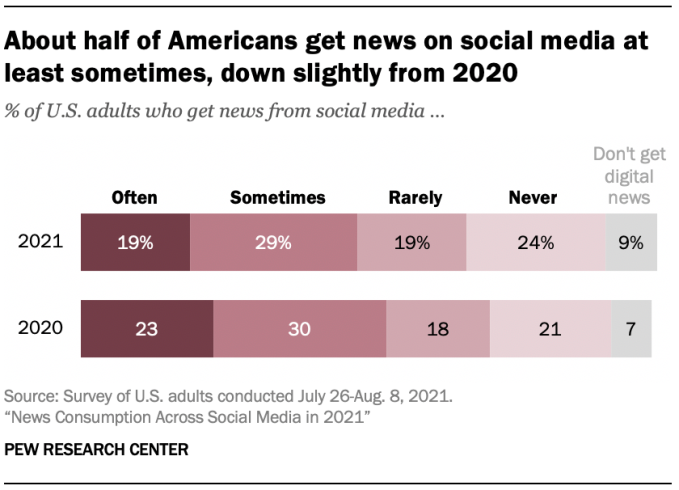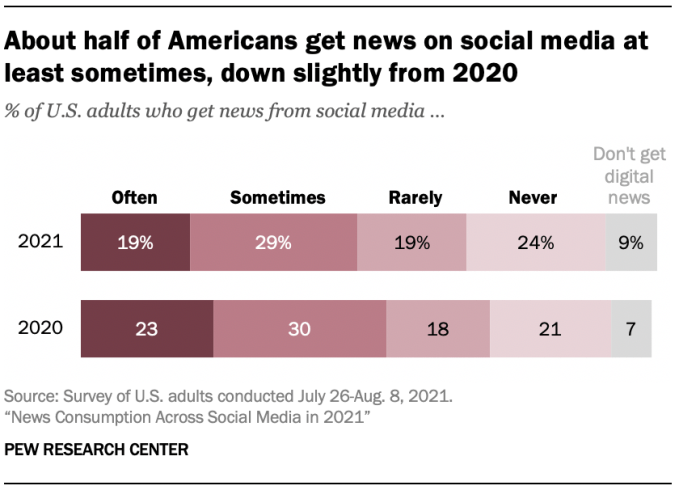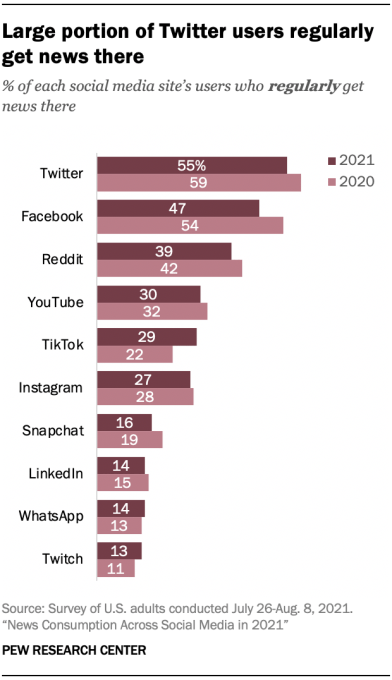3 ways to recruit engineers who fly under LinkedIn’s radar

Sergiu Matei is the founder of Index, a platform that helps teams find and hire world-class remote software developers and be globally compliant from the get-go.
We’ve recently been bombarded with news of job surpluses, including predictions that the number of software developer roles will increase 22% by 2030. With the need for nearly a quarter more developers, recruiters are having to scale their search and look under the stones that have previously been left unturned.
It’s easy to assume in the digital age that job candidates are waiting at the end of a mouse click, but the online hiring space isn’t as encompassing as we think. Less than 10% of people on LinkedIn don’t have an education that surpasses high school, despite 87% of developers having taught themselves a new coding language, framework or tool without formal education.
People who live in emerging markets use LinkedIn less frequently, even though these locations harbor some of the world’s most promising tech talent.
Some developers choose not to have a LinkedIn account because it feels like another social media channel to maintain. This aversion makes sense considering engineers focus more on hard skills rather than their online personae.
This week, LinkedIn announced it would start offering its services in Hindi, which will allow the service to reach 600 million people globally. People who live in emerging markets use the platform less frequently, even though these locations harbor some of the world’s most promising tech talent.
Companies can’t let how they’ve hired in the past influence their approach today — doing so means missing not just the quantity of developers, but the quality and diversity of them. The remote revolution didn’t just broaden where we can recruit, it’s expanded who we can bring on board. With that in mind, these are the best ways to tap into the hidden developer gems.
Open up your content, chats and code
No recruiter should think of hiring a developer as the same process as selling a product or service. As Adam DuVander explains in “Developer Marketing Does Not Exist,” resonating with developers requires more education and less promotion than the majority of companies currently provide.
The content you publish can organically pique people’s interest, as long as it has a strategic purpose and doesn’t overly mention your brand or services; for example, blog posts about upskilling, industry trends and exclusive data insights. You could also host events like webinars, round tables, quizzes and hackathons that are less for recruitment purposes and more to showcase the team and culture. Don’t be afraid to be lighthearted with your content, either. Memes, GIFs and videos are a great way to demonstrate that you don’t take yourself too seriously. And once you remove the promotional positioning, developers in the shadows will start to come forward.
People Buy People On LinkedIn Not Companies: Here’s Why

On LinkedIn, people buy into other people, not companies. LinkedIn is all about you, the leader. When people make decisions, it is based on who you are, how they feel about you and other emotional, sometimes intangible feelings. This is true for social media and in real life.
Gut reactions, good vibe, rapport — people build up a trust with you, or not as the case may be. That’s why authenticity is key. People will find out if you’re fake. And since people on LinkedIn buy into other people, that’s why the best course to get more business is to market your company through your personal page on LinkedIn.
I’ve written before about what I call “the Richard Branson effect,” which can easily be replaced with the Elon Musk effect, the Bill Gates effect or any other public figure in business. These types of company leaders have more engagement and followers on LinkedIn than their respective companies. One hundred times more people follow the leader and founder of Virgin Atlantic, Richard Branson, than the company itself.
People buy people. People follow people, not companies. Even when leaders like Michael Dell have fewer followers than their company page, they actually have more engagement levels for their posts.
As another example, if you look at the Microsoft company page on LinkedIn (and bearing in mind that they own LinkedIn), the company has 14 million followers, but sometimes its posts get literally zero comments. They tend to be boring company updates about diversity, the environment, Azure, the Surface products. Who cares?
So, you have to wonder, if Microsoft often gets such little engagement on LinkedIn, then how do small companies have a chance? You have to keep in mind that when the CEO of Microsoft, Satya Nadella, posts, he routinely gets hundreds of thousands of engagements. People buy into Satya, and when he talks about Microsoft, people listen.
They see more authenticity in Satya. It feels more personal. You can’t take the company to the pub, cafe or restaurant but you can take the CEO or Founder.
It’s often the best place to do business in a bar. This is where the real action happens and where the real “you” comes out. You have a drink, you relax, you build a rapport and you share. You then start trusting one another and that’s how business is done. You can’t take a company out for a drink.
I closed my physical office in Singapore, and I have all my meetings at the W Hotel’s WooBar. I invite people to come and meet me there as it’s a break for them away from their home or physical office in the business district.
Their decision of whether to outsource to my company is often based on how well they get along with me. It can of course go both ways. The ones who enjoy my sometimes polarizing personal brand often become my clients. The whole process is based on social selling, not hard selling.
Build a relationship socially with potential clients. Share the good, bad and ugly about yourself on LinkedIn. You then gain permission in other people’s view to share your company through your personal page on LinkedIn. People will come to trust you and buy your service because of you.
Ultimately, selling is about people, trust, rapport and relationships, and you can’t do that through a company website or a company page on LinkedIn; you can only do it through you and your personal page and brand.
So, my advice is don’t waste time on your LinkedIn company page, and instead focus on your LinkedIn personal page to see results. The examples of successful business personalities speak for themselves.
Forbes Business Council is the foremost growth and networking organization for business owners and leaders. Do I qualify?
8 Tools that are a Must for LinkedIn Automation – Times News Express

When it comes to social media platforms, LinkedIn might come across as Facebook’s older, more responsible, and infinitely more boring sibling. When it comes to functionality, however, it is an invaluable resource to professionals all across the globe. As of 2021, LinkedIn has more than 774 million registered members from more than 200 countries, and savvy HR and marketing-minded professionals would be wise not to overlook the vast array of resources it offers.
From networking to brand building, to publishing, LinkedIn can provide a multitude of services. However, all of these options and the wealth of data can potentially hamper efficiency and productivity.
Here are the seven must-have Linkedin automation tools that will help get the results you want in less time.
Lead generating software that responds at the click of a button is good. Software that runs in the background while you accomplish tasks elsewhere is even better. For example, Castanet can manage single or multiple LinkedIn profiles and continuously run to automatically generate appointment requests, connection invitations, and skill endorsements.
Searches can be precisely filtered by LinkedIn profile characteristics in order to seek out quality clients who are more likely to have an interest in your company and the products or services you offer. When you have a connection with your clients, it means better leads and less wasted time on undesirable prospects.
Dux-Soup is a sales tool focused on automated lead generation. Based upon the parameters you set, it automatically contacts sales prospects selected on LinkedIn. It can also send direct messages, endorse skills, send personalized connection requests. A handy feature is its ability to schedule multiple, delayed, personalized messages.
Crystal is an excellent source of information for both sales and HR professionals. It is able to mine data from LinkedIn profiles to predict communication styles and personality types and therefore give you a better idea of how best to approach customers, coworkers, and prospective employees.
Using the DISC personality method, Crystal also offers various training courses to show you how to implement your acquired data into the most effective processes for team building, hiring, and sales generation.
LeadFeeder uses web tracking technology to identify what companies visit your website and are potentially interested in your services. It is beneficial for gauging the effectiveness of your marketing efforts, as it also tracks how visitors find your website and the path they take. It can even offer data on the specific portions of your website being viewed.
One strange downside of LinkedIn is the overabundance of users and potential sales opportunities. LeadFuze uses powerful filters to narrow down prospects, generate lead lists, and acquire verified personal email addresses to initiate contact.
On the HR side, LeadFuze can run filters to search for potential candidates across LinkedIn who are not actively searching for a job. The LeadFuze search allows hiring managers to find contact information for quality individuals who would be unlikely to apply for posted job offerings independently.
LinkedIn Sales Navigator is added via a simple Chrome extension. It allows you to view LinkedIn profile data if you are emailing someone with a corresponding Gmail account. The LinkedIn Sales Navigator account gives you additional information about them as you’re engaging in direct contact, making it easier to tailor your communication to the specific individual you’re dealing with.
When trying to gather as much information about a potential client as possible, it can sometimes be an arduous process to search throughout the various social media platforms for the same individual or company. Discoverly streamlines that process by gathering all the information from the most commonly used social media sources and compiling each person or company’s social media presence all in one place.
No more logging into five different places to get a comprehensive view of a prospective client’s web presence. Instead, Discoverly lets you toggle between all the platforms in one location for quick searching abilities.
Conclusion
Whether you’re using LinkedIn to build your brand, generate sales leads, or expand your hiring search, the actual platform can contain so much data that streamlining is necessary. These after-market tools and plugins can help you navigate LinkedIn and make the most out of all the resources at your disposal.
Image Credit: pixabay; pexels; thank you!
The post 8 Tools that are a Must for LinkedIn Automation appeared first on Calendar.
Study finds half of Americans get news on social media, but percentage has dropped

A new report from Pew Research finds that around a third of U.S. adults continue to get their news regularly from Facebook, though the exact percentage has slipped from 36% in 2020 to 31% in 2021. This drop reflects an overall slight decline in the number of Americans who say they get their news from any social media platform — a percentage that also fell by 5 percentage points year-over-year, going from 53% in 2020 to a little less than 48%, Pew’s study found.
By definition, “regularly” here means the survey respondents said they get their news either “often” or “sometimes,” as opposed to “rarely,” “never” or “don’t get digital news.”
The change comes at a time when tech companies have come under heavy scrutiny for allowing misinformation to spread across their platforms, Pew notes. That criticism has ramped up over the course of the pandemic, leading to vaccine hesitancy and refusal, which in turn has led to worsened health outcomes for many Americans who consumed the misleading information.
Despite these issues, the percentage of Americans who regularly get their news from various social media sites hasn’t changed too much over the past year, demonstrating how much a part of people’s daily news habits these sites have become.

Image Credits: Pew Research
In addition to the one-third of U.S. adults who regularly get their news on Facebook, 22% say they regularly get news on YouTube. Twitter and Instagram are regular news sources for 13% and 11% of Americans, respectively.
However, many of the sites have seen small declines as a regular source of news among their own users, says Pew. This is a different measurement compared with the much smaller percentage of U.S. adults who use the sites for news, as it speaks to how the sites’ own user bases may perceive them. In a way, it’s a measurement of the shifting news consumption behaviors of the often younger social media user, more specifically.
Today, 55% of Twitter users regularly get news from its platform, compared with 59% last year. Meanwhile, Reddit users’ use of the site for news dropped from 42% to 39% in 2021. YouTube fell from 32% to 30%, and Snapchat fell from 19% to 16%. Instagram is roughly the same, at 28% in 2020 to 27% in 2021.
Only one social media platform grew as a news source during this time: TikTok.
In 2020, 22% of the short-form video platform’s users said they regularly got their news there, compared with an increased 29% in 2021.
Overall, though, most of these sites have very little traction with the wider adult population in the U.S. Fewer than 1 in 10 Americans regularly get their news from Reddit (7%), TikTok (6%), LinkedIn (4%), Snapchat (4%), WhatsApp (3%) or Twitch (1%).

Image Credits: Pew Research
There are demographic differences between who uses which sites, as well.
White adults tend to turn to Facebook and Reddit for news (60% and 54%, respectively). Black and Hispanic adults make up significant proportions of the regular news consumers on Instagram (20% and 33%, respectively.) Younger adults tend to turn to Snapchat and TikTok, while the majority of news consumers on LinkedIn have four-year college degrees.
Of course, Pew’s latest survey, conducted from July 26 to August 8, 2021, is based on self-reported data. That means people’s answers are based on how the users perceive their own usage of these various sites for newsgathering. This can produce different results compared with real-world measurements of how often users visited the sites to read news. Some users may underestimate their usage and others may overestimate it.
People may also not fully understand the ramifications of reading news on social media, where headlines and posts are often molded into inflammatory clickbait in order to entice engagement in the form of reactions and comments. This, in turn, may encourage strong reactions — but not necessarily from those worth listening to. In recent Pew studies, it found that social media news consumers tended to be less knowledgeable about the facts on key news topics, like elections or COVID-19. And social media consumers were more frequently exposed to fringe conspiracies (which is pretty apparent to anyone reading the comments!).
For the current study, the full sample size was 11,178 respondents, and the margin of sampling error was plus or minus 1.4 percentage points.
-

 MARKETING7 days ago
MARKETING7 days agoRoundel Media Studio: What to Expect From Target’s New Self-Service Platform
-

 SEO6 days ago
SEO6 days agoGoogle Limits News Links In California Over Proposed ‘Link Tax’ Law
-
SEARCHENGINES7 days ago
Daily Search Forum Recap: April 12, 2024
-

 SEARCHENGINES6 days ago
SEARCHENGINES6 days agoGoogle Core Update Volatility, Helpful Content Update Gone, Dangerous Google Search Results & Google Ads Confusion
-

 SEO5 days ago
SEO5 days ago10 Paid Search & PPC Planning Best Practices
-

 MARKETING6 days ago
MARKETING6 days ago2 Ways to Take Back the Power in Your Business: Part 2
-

 SEARCHENGINES4 days ago
SEARCHENGINES4 days agoWeekend Google Core Ranking Volatility
-

 MARKETING4 days ago
MARKETING4 days ago5 Psychological Tactics to Write Better Emails











![New Report Highlights Key Tips to Maximize LinkedIn Performance [Infographic] New Report Highlights Key Tips to Maximize LinkedIn Performance [Infographic]](https://articles.entireweb.com/wp-content/uploads/2024/02/1707701164_New-Report-Highlights-Key-Tips-to-Maximize-LinkedIn-Performance-Infographic.webp-400x240.webp)
![New Report Highlights Key Tips to Maximize LinkedIn Performance [Infographic] New Report Highlights Key Tips to Maximize LinkedIn Performance [Infographic]](https://articles.entireweb.com/wp-content/uploads/2024/02/1707701164_New-Report-Highlights-Key-Tips-to-Maximize-LinkedIn-Performance-Infographic.webp-80x80.webp)


You must be logged in to post a comment Login